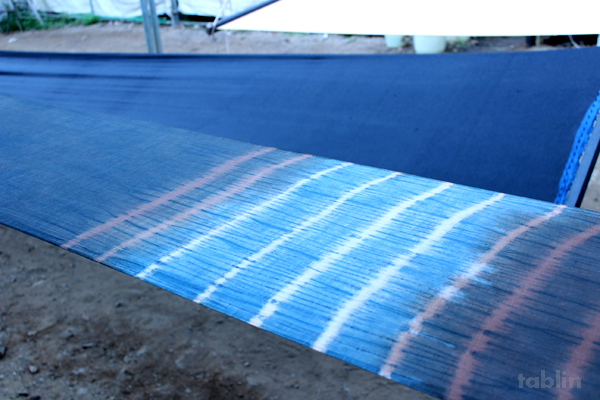
A dye craft house committed to distinct, natural hues obtained only from natural dyes exists in nature-rich Ohara, which is surrounded by mountains and greenery and is as 40-50 minute drive from the Kyoto city proper. It is called Mitsuru Crafts.
At Mitsuru Crafts, mugwort, buds, branches and other vegetation become the ingredients for kusakizome (plant dyeing); and with painstaking care, craftsmen produce dyed products through kakishibuzome (persimmon tannin dyeing). Many people are charmed by the natural hues, and the fusion of traditional Japanese patterns and new designs.
I visited the craft house and observed part of the dye production process. Mr.
Mitsuru Yasui, the founder of this craft house started in wholesale selling of linen fabrics and other products to places such as dry goods stores and dye craft houses in Kyoto. He then realized he could utilize the resources of the nature-rich region that he was born and bred in – the mountain water and nearby plants that can be harvested for use in natural dyes. He has since developed many products such as noren and tapestries utilizing these natural dyes.
Ohara, Kyoto has the perfect environment for dyeing which uses large quantities of water. Each house draws mountain water to use in daily life, and this system has been handed down from old. Even today, there are many households that use both mountain water and tap water for their needs.
Through the above-mentioned system, an eco-friendly water source free from matter such as sterilization substances found in numerous quantities in tap water has been made possible. Mountain water is also valuable during the brewing of ingredients for kusakizome; and by using clean water in the dye bath, brightly-colored dyes materialize.
In addition, the sole use of natural dyes do not release harmful substances; so Mitsuru Crafts’ operations become one with Ohara’s natural environment. At Mitsuru Crafts, hues which become the base color are dyed into fabrics utilizing brush dyeing, a traditional technique. I filmed part of the dyeing process which you can view here: What is “Hikizome”? Hikizome is a dyeing method that utilizes a brush to paint the dye on the fabric. Because a long piece of fabric is dyed using a brush, dyeing the whole fabric in a uniform color requires an extremely high level of skill. 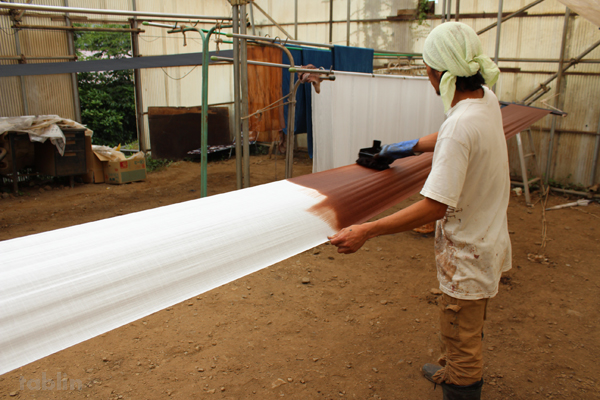 If too much dye is used, mottling occurs, or the fabric blackens thus extreme care is given during the process.
If too much dye is used, mottling occurs, or the fabric blackens thus extreme care is given during the process. 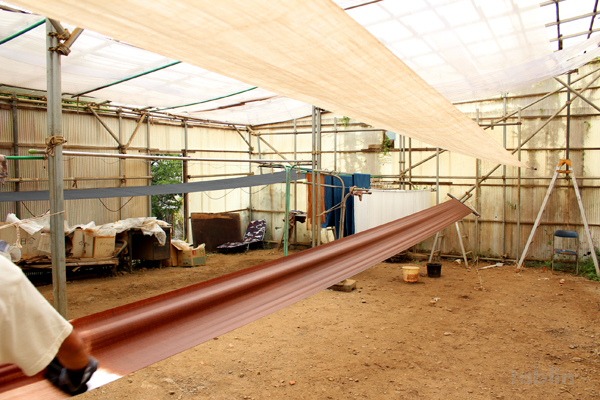 At the craft house, a fabric measuring more than ten meters is stretched and dyed by hand using a brush. Depending on the temperature and humidity, the dye is adjusted which relies on the instincts of a well-seasoned craftsman. Taking care to avoid wrinkles, the fabric is steadily stretched to an optimal state on a stretching rod.
At the craft house, a fabric measuring more than ten meters is stretched and dyed by hand using a brush. Depending on the temperature and humidity, the dye is adjusted which relies on the instincts of a well-seasoned craftsman. Taking care to avoid wrinkles, the fabric is steadily stretched to an optimal state on a stretching rod. 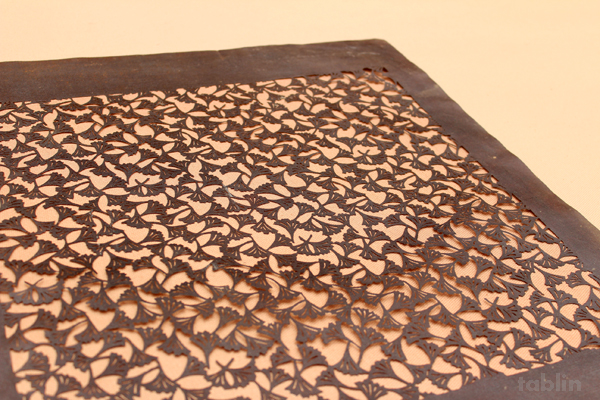
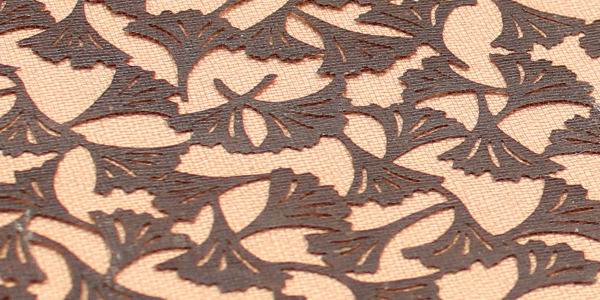 (Photo: Ise Dyed Pattern Paper – a hand-carved pattern paper that is presently difficult to obtain) With regards to Mitsuru Crafts’ noren, traditional dyeing methods such as hand-painting using a brush, hand-carved Ise dyed pattern paper or a silk screen are fused with new techniques.
(Photo: Ise Dyed Pattern Paper – a hand-carved pattern paper that is presently difficult to obtain) With regards to Mitsuru Crafts’ noren, traditional dyeing methods such as hand-painting using a brush, hand-carved Ise dyed pattern paper or a silk screen are fused with new techniques. 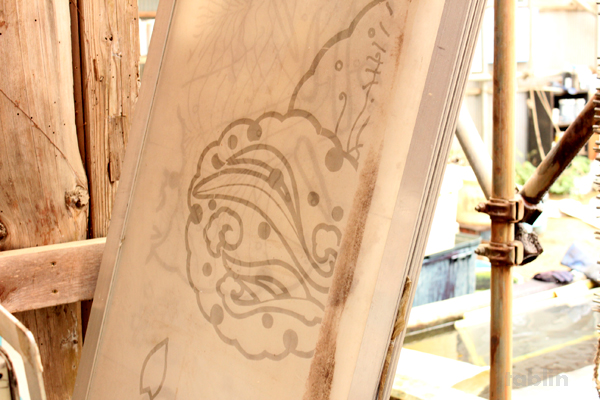
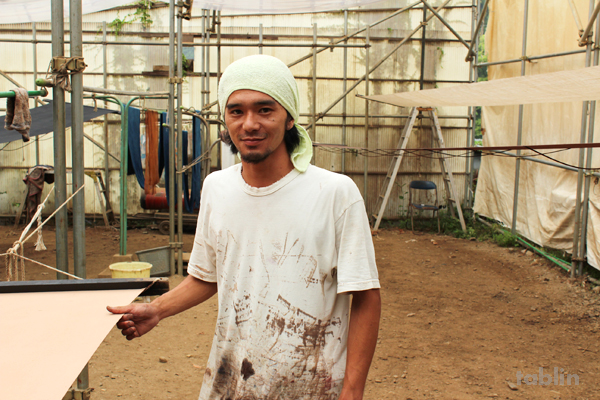 Mr. Masashi Yasui, head of the craft house Dyed fabric painted with multiple layers of natural dye and utilizing traditional techniques steadily changes into a tea-colored fabric with the passage of time. The resulting handcrafted article is unique, a deeply-hued and richly-textured dyed product that is like no other.
Mr. Masashi Yasui, head of the craft house Dyed fabric painted with multiple layers of natural dye and utilizing traditional techniques steadily changes into a tea-colored fabric with the passage of time. The resulting handcrafted article is unique, a deeply-hued and richly-textured dyed product that is like no other.
Mitsuru Japanese Noren Crafts: A dye craft house committed to distinct hues resulting only from natural dyes
– 2014/08/01Posted in: traditional craft